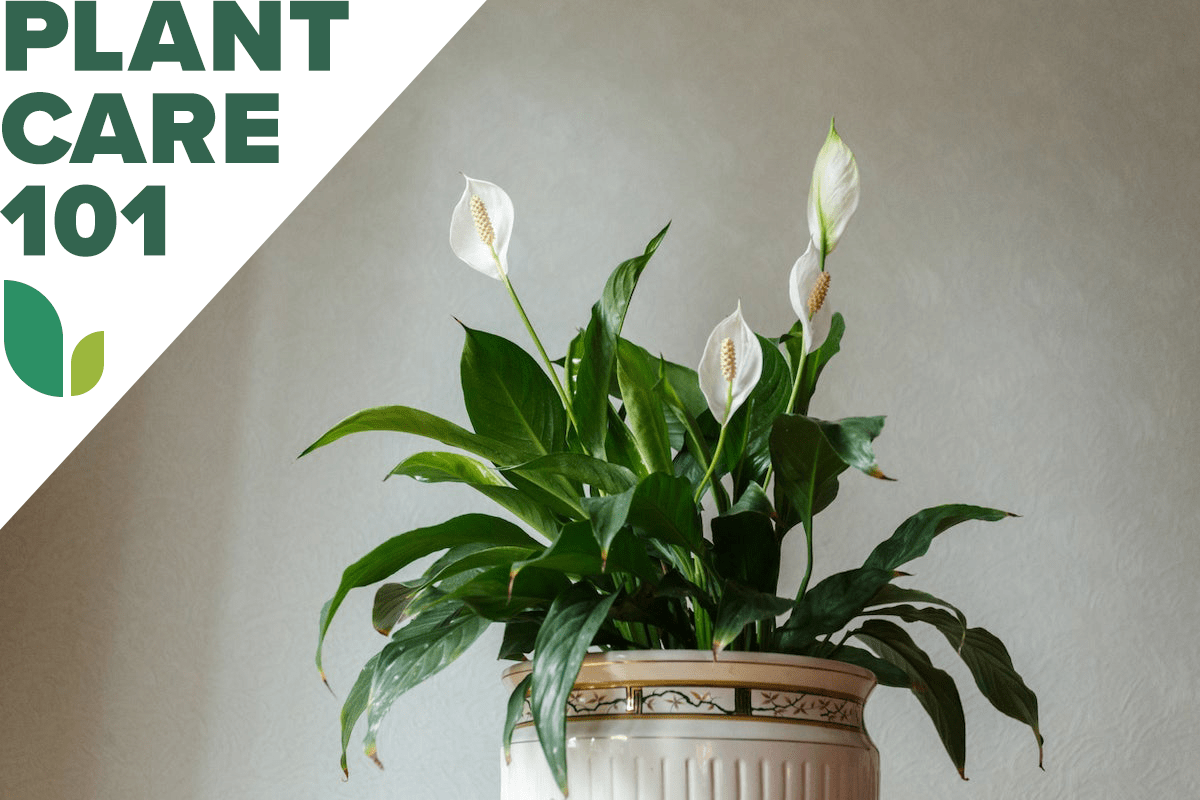

We may earn revenue from the products available on this page and participate in affiliate programs. Learn More ›
Perhaps due to “rest in peace” connotations, the peace lily has become popular as a gift to the bereaved. Although not really a lily and actually named for the fact that its white spathes resemble flying flags of truce, the plant still serves well as a living remembrance of the departed.
The peace lily also makes a good choice for friends whose environments don’t have enough sunlight for other types of flowering plants. Since most people are likely to buy or receive one at some point in their lives, it is fortunate that peace lily care is as unfussily simple as the plant itself.
Related: It’s Not Me, It’s You: The 15 Toughest Houseplants to Keep Alive
Peace Lily Care at a Glance
Common name: Peace lily
Scientific name: Spathiphyllum spp.
Soil: Standard potting soil
Light: Bright indirect or morning sun
Water: Enough to keep soil lightly moist
Food: Flowering houseplant food
Temperature and humidity: Standard household
Propagation: By division
Safety: Toxic if consumed by pets or people
Peace Lily Characteristics
Peace lilies (Spathiphyllum spp.), all of which grow from rhizomes, can shoot up to 6 feet high when growing outdoors in USDA Zones 11 and 12—and in the central American and southeast Asian areas where they are native. However, they probably won’t surpass 3 feet indoors as they green up a room with their glossy, gracefully arching leaves.
The plants’ spoon-like white flowers actually are leaf bracts or spathes backing the tiny real blooms that spiral around the yellow or white spadices. The white bracts turn green after 10 days or so but can remain on the plant for weeks. Although peace lilies flower most heavily in spring and summer, they may continue to do so intermittently all year long.
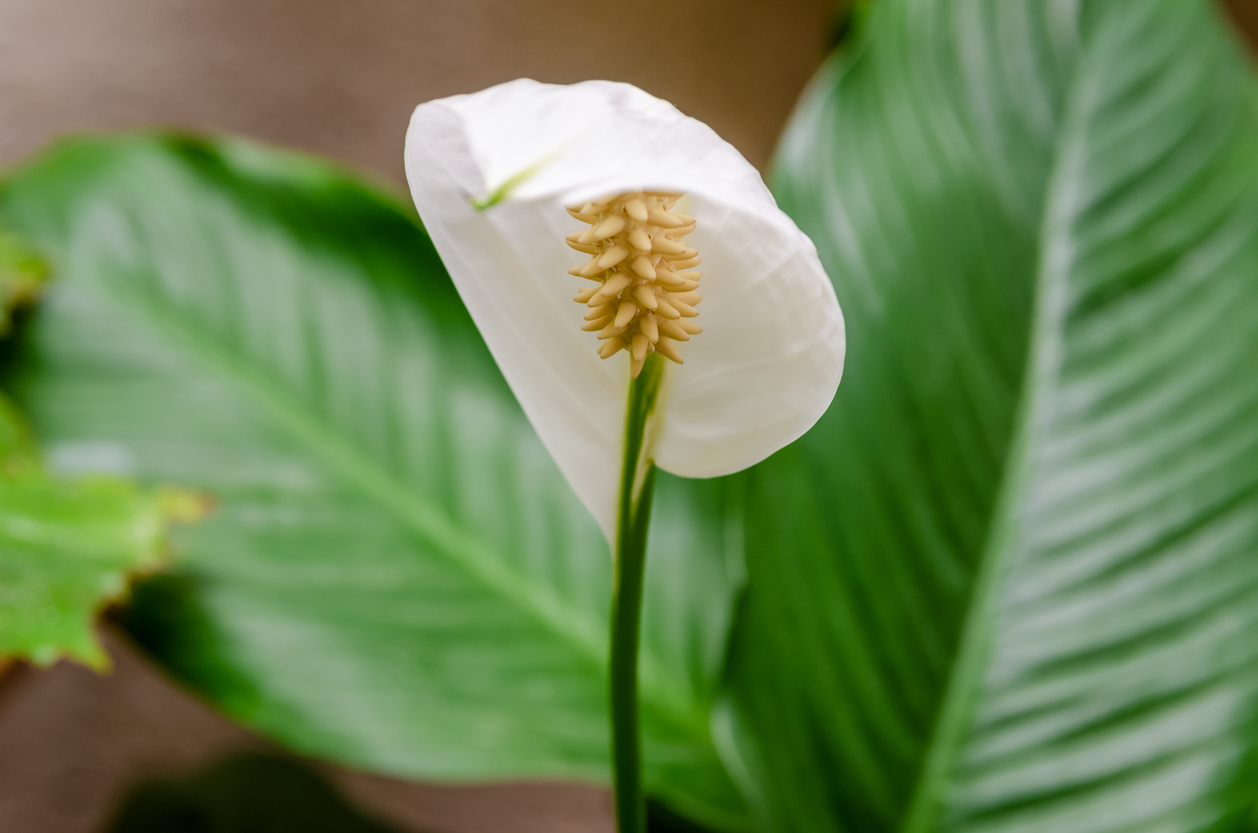
Types of Peace Lilies
- Spathiphyllum ‘Domino’ grows to 2 feet and has white-spattered foliage.
- Spathiphyllum ‘Sensation’ can reach a height of 6 feet and has ribbed leaves.
- Spathiphyllum ‘Wallisii’ tops out at only about 15 to 20 inches.
Selecting Soil for Peace Lilies
A standard potting mix with a mildly acidic pH works well for peace lily, which should be repotted each spring to freshen its soil. However, never repot the plant into a container that is more than one third larger than its root ball, since this plant likes to be snugly encased. Make sure that the pot has a drainage hole or holes to prevent water buildup.
If you must use a container without holes, place a layer of gravel in its bottom to catch and hold any extra water—perhaps accompanied by a sprinkling of horticultural charcoal. Then keep a close eye on the pot to make sure that its soil doesn’t become soggy or smelly due to stagnant water.
The Right Light
Because it is native to the jungle understory, the peace lily plant prefers bright indirect light or only morning sun, which tends to be gentler than afternoon rays. Although the plant will grow under even dimmer conditions, it probably won’t flower as well there.
However, if the leaves on your plant turn pale, curl downward, or develop brown scorch marks, it likely is receiving too much light, so shift the plant’s location to a shadier spot. If a peace lily never flowers, that might be a sign that it isn’t getting enough light and should be moved to a brighter location where it can spathe out.
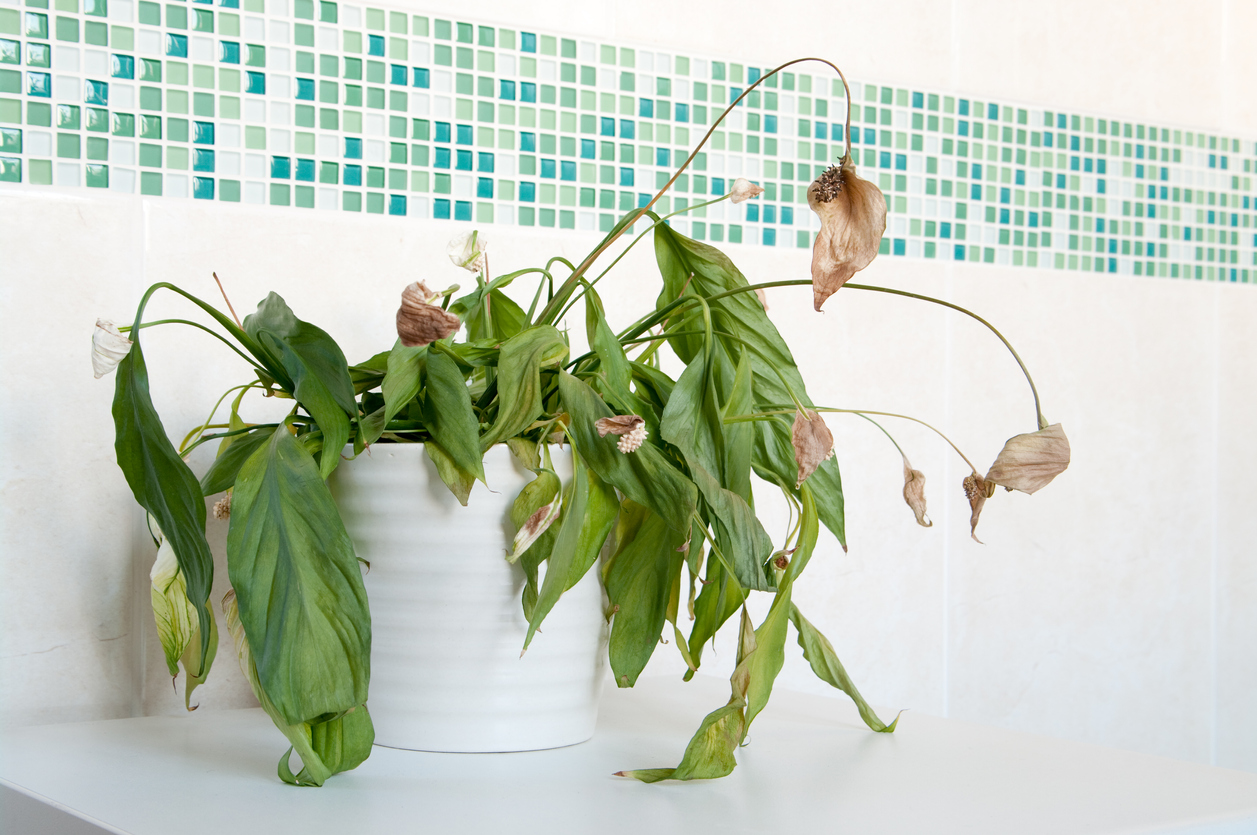
Watering Peace Lilies
Keep the soil lightly moist at all times, but never allow it to become soggy. The plant will tell you that it is dry by wilting in dramatic fashion, but since that wilting also can cause peace lily yellow leaves, avoid allowing dryness to reach that extreme. On the other hand, the plant is prone to root rot if overwatered. Keep its soil damp rather than wet.
Because peace lily can be sensitive to chemicals, allow its water to sit in an open container for a while before you apply it. That will give it a chance to warm to room temperature and for chlorine to evaporate from tap water.
Fertilizing Peace Lilies
Due to that sensitivity to chemicals, it’s also a good idea to fertilize your plant only lightly once a month during the growing season, using either an organic houseplant fertilizer or only one fourth of the amount listed on the label for a chemical plant food. Excess feeding reportedly can cause leaf-tip burn on this plant.
For the best results, choose a phosphorus-rich fertilizer intended for flowering plants. Stop applying it when the plant ceases growth during winter. When watering your plant, always water heavily enough that you wash out excess fertilizer salts, but be sure to empty the extra water from the plant saucer afterward.
Setting the Temperature and Humidity
The peace lily prefers normal household temperatures between 68 and 85 degrees Fahrenheit. Although it will tolerate somewhat low humidity, this jungle plant should perk up considerably if you mist it occasionally and place it atop a humidity tray (available on Amazon).
Those with hard water might want to mist with purchased spring water to avoid hard-water spots on the plants’ foliage. Positioning a peace lily inside a cluster of other plants also should help to raise the humidity around it, as will placing it in a bathroom or near a kitchen sink where the frequent running of water raises humidity levels.
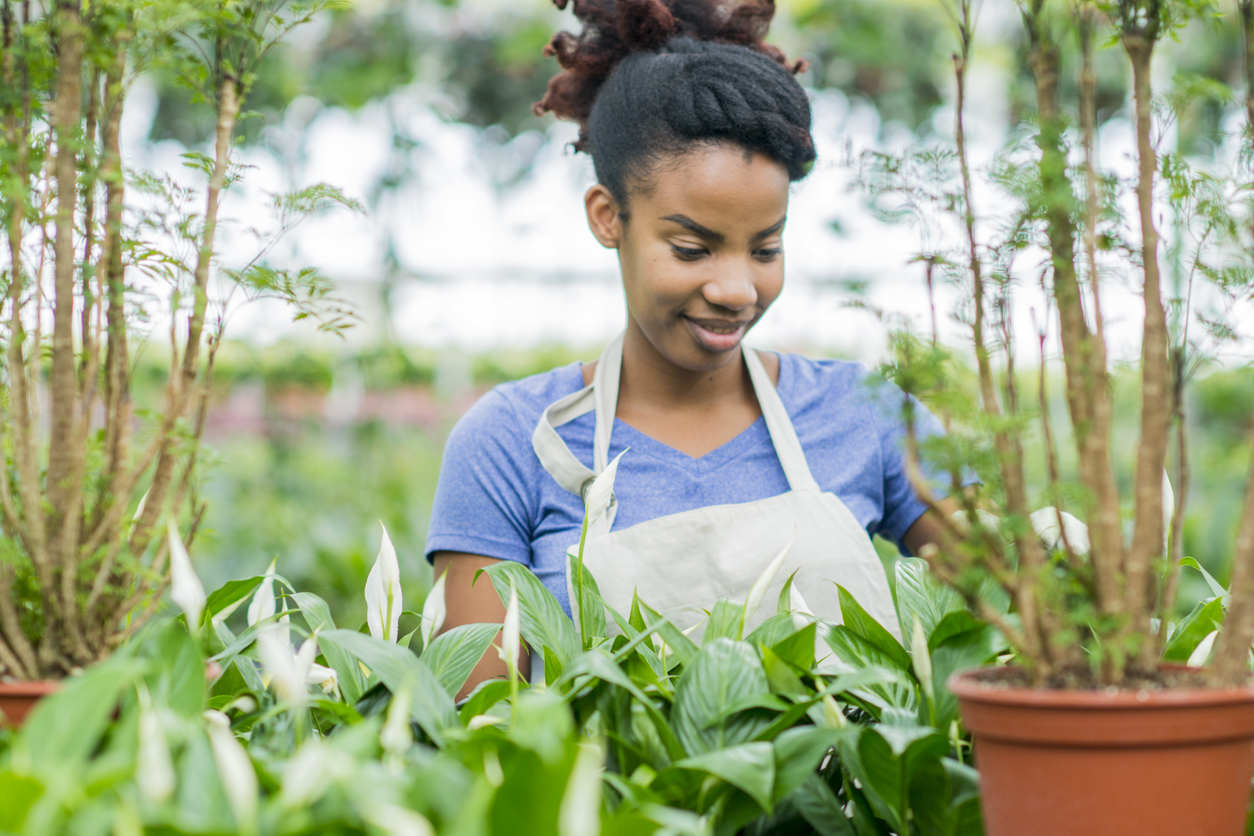
Propagating Peace Lilies
If you love your peace lily plant to pieces and want to share it, the best way to do so is by dividing it into sections. This separation generally works best in spring, when plants are eager to grow.
Simply remove the plant from its container, rinse the soil from its rhizomes, and pull or cut those rhizomes apart, making sure that each section contains sufficient foliage for a new plant. Give each clump its own pot filled with fresh potting soil, planting the rhizomes as deeply as they grew in the previous container, and your single plant now can make a gift or grace another spot in your home.
Safety Considerations
Peace lily contains calcium oxalate crystals, which can cause swelling and pain in the mouth and throat, as well as difficulty in swallowing, when any part of the plant is eaten either by people or animals. Therefore, if you want to keep its associations peaceful, you’ll keep it away from young children and pets.
The plant’s sap also might irritate your skin, so it’s a good idea to wear plastic gloves as protection when pruning or dividing the peace lily plant and to wash all tools well afterward. That sap can drip from the plant on occasion, which usually indicates an infestation—probably scale insects.
Potential Pests and Diseases
Knowing how to care for peace lily plants can keep the plant healthy and help it ward off problems. But some pests still can pester the peace plant, including the abovementioned scale insects, which resemble, well, scales. Then there are aphids that resemble green lice, mealybugs that look like bits of cotton, thrips that resemble bits of thread, and spider mites, which resemble bitsy spiders.
You can wash these pests right out of your plant by applying an insecticidal soap solution, mixed according to package directions, and repeating the application about once every 5 days until all the insects are gone. If your tap water is hard, purchase distilled water to mix with the soap instead, since hard water reduces its effectiveness.
Related: The 12 Hottest Houseplants for Your Home Office, According to the Masses
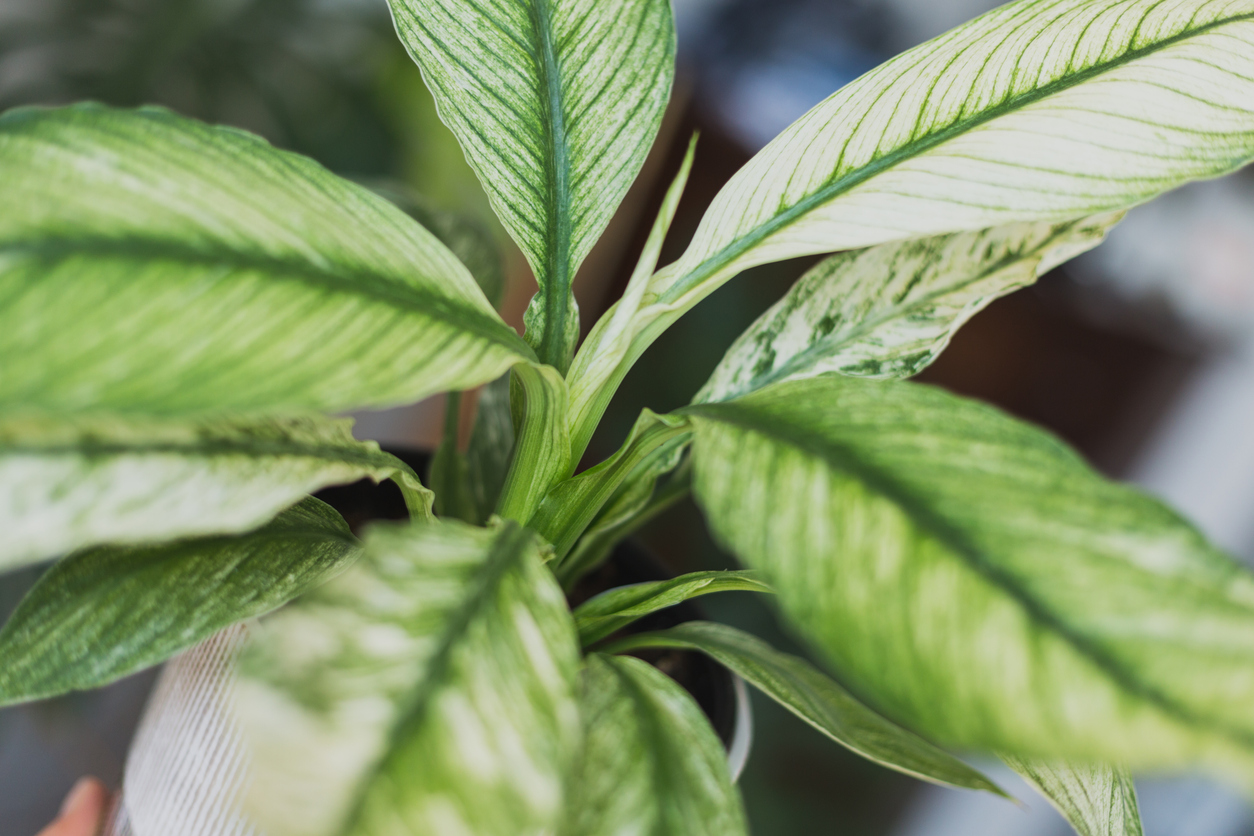
FAQs About Peace Lily Care
Do you need some quick advice on how to care for a peace lily when your less-than-peaceful life doesn’t allow you much time? Find answers to some of the most frequently asked questions about the plant below.
Q. How much direct sunlight do peace lilies need?
None. Peace lilies prefer bright indirect light. They usually will tolerate morning sun, but not the harsher afternoon sort.
Q. Where should I place my peace lilies in my house?
Position your peace lilies where they receive bright indirect light or only morning sun.
Q. Do peace lilies like to be misted?
Yes; peace lily plants enjoy being sprayed with a fine mist of water from time to time. Avoid using hard water for misting, since it can leave spots on the dark green foliage.
